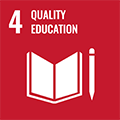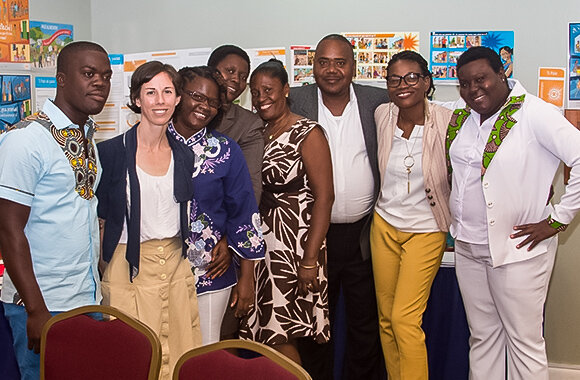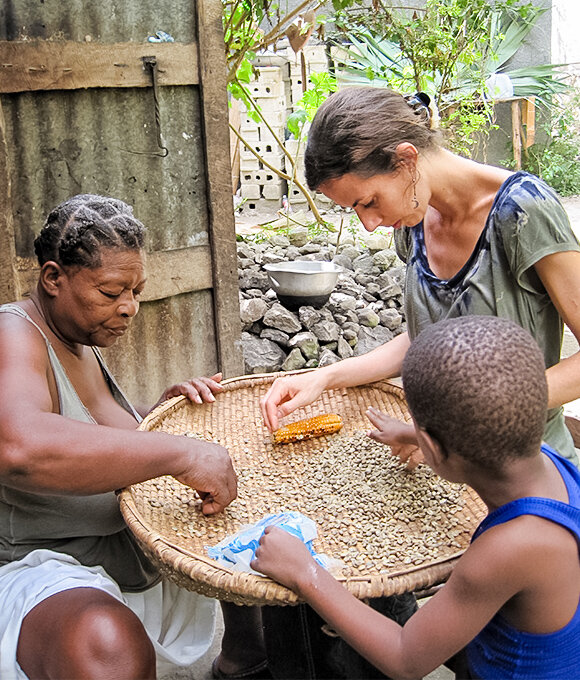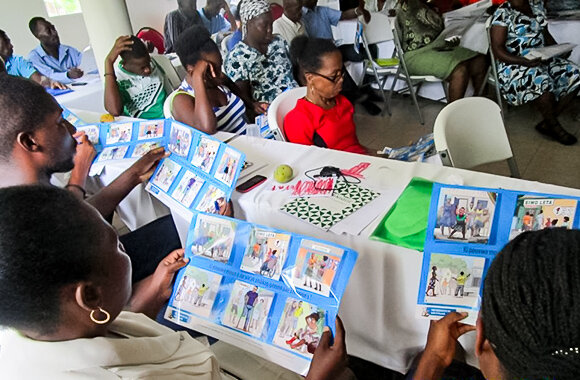Use of Cookies
Our website uses cookies to facilitate and improve your online experience.

By Jisho Siebert
As human beings, our minds are set up to learn. While it is not necessary to have formal education to live an awakened life, it benefits a society greatly to have people educated to solve its own problems. In Buddhist terms, quality education is aimed at awakening to our intrinsic nature and cultivating that wisdom in our lives and communities. Quality education leads to increased ability to achieve health and wellbeing in a community. Quality education includes both formal education for children and lifelong learning opportunities that can continue to help sustain the conditions where human rights are respected.
The efforts of our small Zen Sangha in Ames, Iowa to achieve the SDGs through our practice have been limited. We share my activity in Haiti with you in this article regarding “Quality education and lifelong learning opportunities for all”.
I work in Haiti and have many opportunities to be in educational settings there. Sitting in a Haitian school in a rural area is a very different sensory experience from the schools I attended in the United States. The school I am most familiar with is much like many others. There is a chair for the teacher, a chalk board, and uncomfortable wooden benches packed so close together that it is difficult to get in and out. There is nothing on the walls, no internet, and to get a phone connection one must stand on a pile of rocks in a particular place behind the school. Sometimes the rain comes in the window and spatters your clothes; then you cannot hear the teacher because the roof is tin, and the rain is loud. And yet, the rain is what will make the crops grow and allow families to eat, so the pause in lessons is still a joyful one.

Sitting in this mountain school is a blessing for me and for the students who go there. The UN estimates about 258 million school-aged children worldwide did not attend school in 2018; the problem is expected to persist, with 200 million children projected to still be out of school by 2030. Common reasons for a child not being in school include: children being separated from their parents, inability to pay for fees or books, child labor, child marriage, fear of or experience of violence on the way to or in school, and others.
For those lucky enough to go to a school, the struggle to get there shows the strong motivation to learn among children and parents worldwide. There is a children’s book called “Running the Road to ABC” that tells the story of children in a classroom like the one I just described. They run, and run, for hours before the sun rises, from their faraway homes across the mountains to arrive at school on time. They clean their shoes and enter to learn “one more letter and one more sound, one more sound and one more word...” And then they run home through rain, through mud, as and after the sun sets, to start the process again the next day. This is the story of many children I know. Being able to pay for education is the single-minded intent many parents I know as well; they sacrifice food, other needs and sometimes their own wellbeing to continue to pay fees associated with sending a child to school. This story is repeated in many countries throughout the world.

Despite the seemingly universal will to learn and the United Nations Sustainable Development Goal (SDGs) target to eliminate disparities in education, access to a quality education depends on who you (and your parents) are. In some countries, it is more likely for a girl to experience sexual violence than for her to learn to read. Students with disabilities often do not have the opportunity to continue education due to barriers in the school or the community. Some ethnic groups hesitate to send their children to school because of the foreign cultural values they fear will be instilled there; this is a lack of access to quality education that meets their needs. In many countries, the more advanced grade levels become increasingly populated by boys from dominant ethnic groups born to wealthier families.
The focus of my work in Haitian communities has been on elimination of gender and other disparities in schools and communities, as well as on the SDGs target of ensuring all learners (child and adult) have the knowledge and skills to promote sustainable development.
We work with the whole community through a process of community dialogue and education. This includes many formal and informal trainings and conversations, both in classroom settings and informal community settings, with youth and adults. We use questions to spark discussion about how we use power in our lives and relationships, as well as about human rights and community problems like violence against girls, women, and people with disabilities. The idea is to activate a network of people living in each community to come together to transform their community into a place where the seeds of peace and nonviolence can grow.

In one part of the program, there is a schoolwide process of change that prepares school to launch delicate conversations about violence and power. It trains all school personnel, from school directors to teachers to those who clean the school, in the basics about creating a safe, nonviolent atmosphere and positive use of the power we each have as human beings. It encourages strong community referral systems and codes of conduct that clearly outline beneficial behavior for school personnel.
There are many programs worldwide like the one I describe in Haiti, which seek to create the conditions for cultivation of wisdom and respect for human rights. In order to achieve the SDGs around lifelong education and quality learning opportunities, all of our efforts are needed. One question we may ask ourselves is: How can I support quality education in my own community?
We hope to continue to improve our answer to that question, as we take on the SDGs as part of our Vow to free all beings.

Rev. Jisho Siebert is a Soto Zen Buddhist priest who was led to Buddhism by the suffering around her and in her work to prevent domestic and sexual violence. Her path to understand suffering and joy led her to Los Angeles – where she first met her teacher, Rev. Gengo Akiba, then to Papua New Guinea, Liberia, Sierra Leone, Uganda, monasteries in Japan, and Haiti. At present she works for Beyond Borders, an organization working in Haiti, committed to preventing violence against girls and women and ending child slavery. She is recognized as a Kokusaifukyoshi by the Sotoshu and teaches at Zen Fields in Ames, Iowa.